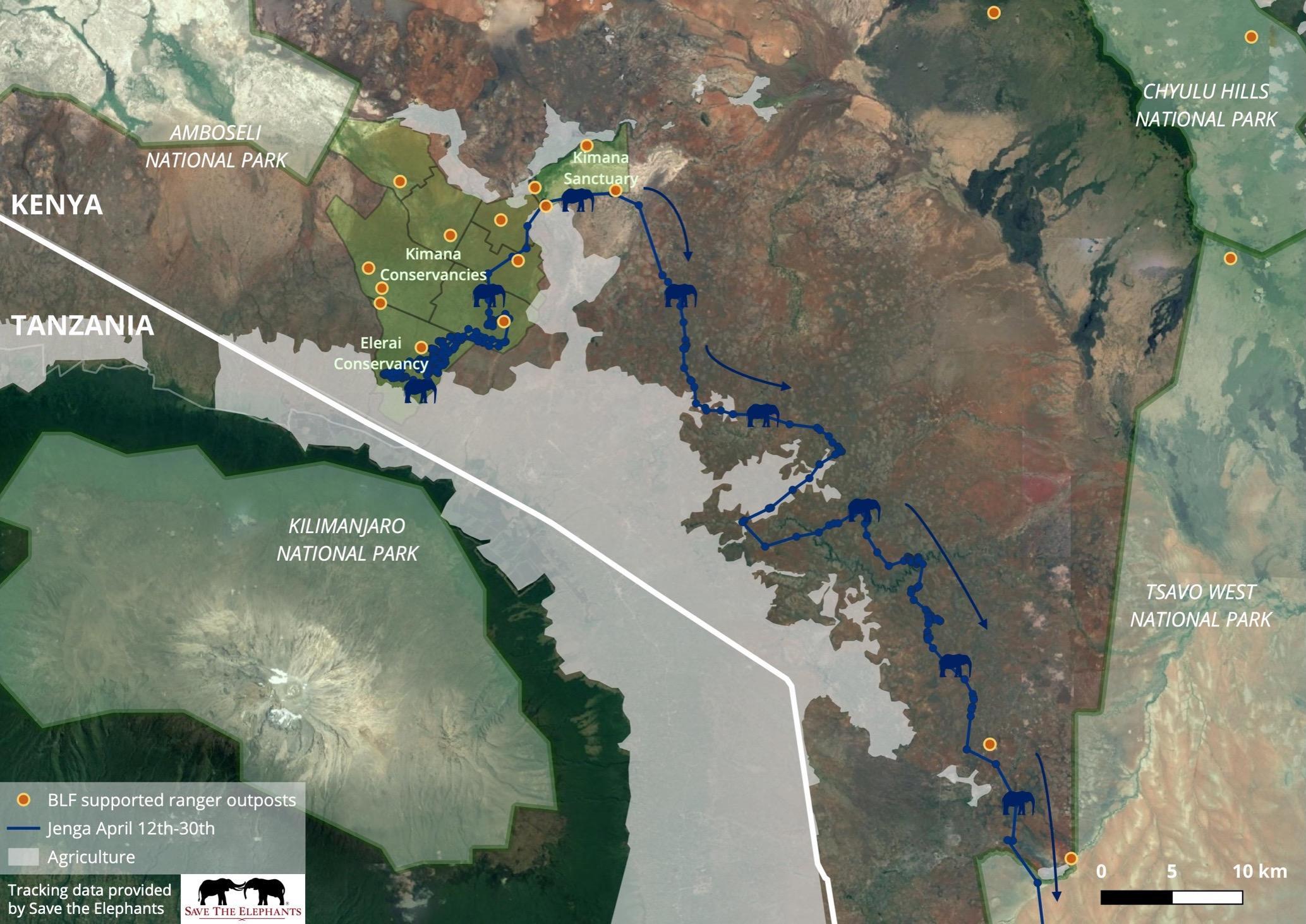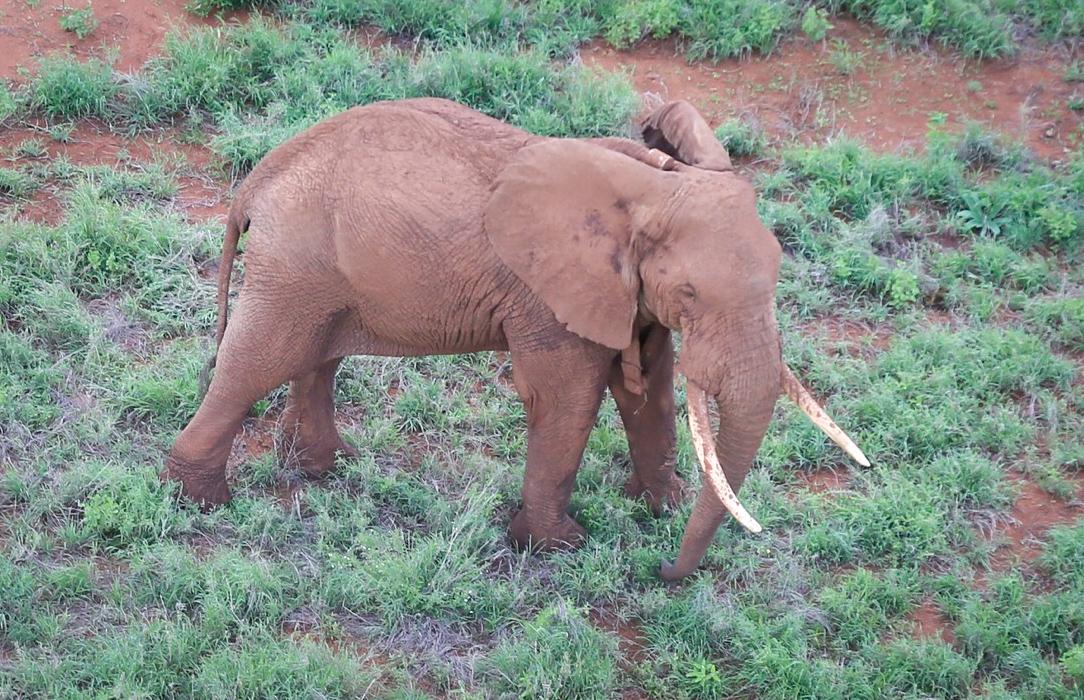
His name is Jenga. He’s a 31-year old male. We don’t know why he did it; perhaps he set off on a whim, chasing a scent on the breeze. Or maybe some long-forgotten memory of a previous journey surfaced, triggering his decision. All we know is that he started walking.
His walk has given us an extraordinary look into the life of a bull elephant, and the relevance of our work to such an animal. For a while now, we’ve discussed the importance of the Kimana Sanctuary and the Kimana Conservancies as critical pieces of a movement corridor that allows animals to thread their way through agriculture and other human development on the journey between the Amboseli and Tsavo ecosystems.
But demonstrating this journey is not easy. We regularly see animals on the move, but have little idea where they’ve come from or where they are going. The long journeys in particular are uncommon, and usually made by young males in search of better food or breeding opportunities.
Now thanks to Jenga, and his tracking collar that was fitted by Save the Elephants, we can finally show you what a journey through this corridor looks like. Over the month of April, Jenga travelled first from Tsavo West towards Amboseli (this movement not shown on the map above), not quite reaching Amboseli National Park but spending several weeks in the Kimana and Elerai community conservancies.
For whatever reason, he decided to turn around and head home. Without ever having seen it or done it before, he used the Kimana Crossing, where animals are funneled through a 250 ft wide gap and over a tar road. He then passed through the Kimana Sanctuary on his way back to Tsavo West, perfectly demonstrating how the corridor can and should work. In total, Jenga travelled more than 100 km over the two weeks.
Such movements, and the strategic pieces of habitat that allow for them, are more important than they sound. They keep wildlife populations connected, maintaining genetic diversity and the adaptive potential that comes with it. And as our climate continues to change, this freedom of movement will become more and more important.
A huge thanks to Save the Elephants, who are doing the science that is helping to demonstrate the importance of these wildlife corridors, to the Sheldrick Wildlife Trust, who are our partners in protecting the Kimana Corridor and Sanctuary, and to Vulcan Inc. for developing the technology that allows us to track these movements in near real-time on our mobile devices. But an equally big thank you to all of our supporters for helping us to protect these elephants and the wilderness areas they need to flourish.

IMAGE COURTESY OF TSAVO TRUST
